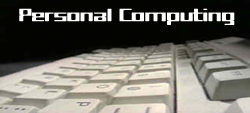 By Reid Goldsborough
By Reid Goldsborough
One of the magical things about personal computers is how they can truly be personal, and one way to do this is deciding how much to use your mouse. Many people find that minimizing the use of their mouse or other pointing device helps them work faster and with less strain on their wrist.
The trick is taking fuller advantage of your keyboard.
Today’s computer operating systems and programs come with many keyboard shortcuts built in. The most commonly used is Ctrl + S, to save a file. You can also create your own keyboard shortcuts, including those that carry out multiple operations, called macros.
The following applies to Windows computer users, newcomers as well as geeks. For those using Mac OS X computers, Apple has a helpful page at http://support.apple.com/kb/HT1343.
The first thing to check out is the extra keys that come with your keyboard. Some have keys for launching programs, adjusting audio, and other tasks. Most Windows PCs have keyboards that include the underutilized Windows key, which first made its appearance with Windows 95 computers. If your computer doesn’t have a Windows key, which has a stylized design of a streaming window on it, Ctrl-Esc does the same thing.
Pressing the Windows key alone pulls down the Start menu, which is a fast way to launch programs and carry out other activities. Windows Vista made the Start menu even more useful with its Search box, which acts like the Run command in previous versions of Windows. To start a program, you can simply hit the Start button and begin typing the name of the program until it’s displayed, hit the down arrow key until it’s highlighted, and hit Enter.
You can also use the Windows key in combination with other keys. Windows key + D, for instance, hides all open windows so you can quickly get to your desktop icons. Hitting Windows key + D again reverse this. Some people make use of desktop icons to start programs or get quick access to selected files.
Another way to quickly start programs is to click on the program’s icon in the Start menu or on the desktop using your right mouse button. Choose Properties. Place your mouse pointer in the Shortcut key box. Then press the key combination you want to start that program. Use the same types of keyboard combinations for this purpose, such as Ctrl + Alt + letter.
Another often underutilized key is the Tab key. Alt + Tab moves you from one open program or document to another. Hitting it repeatedly toggles you back and forth between two. Holding down the Alt key as you repeatedly hit Tab shows you which programs are running and lets you move to the one you want to work with.
In word processing documents the Tab key creates a tab space, in a spreadsheet program it moves you from one cell to another, and in a Web browser it takes you from one link to another. In dialog boxes hitting Tab moves you from one option to another. Shift + Tab goes backward.
Some keys on PC keyboards are holdovers from pre-PC technology and typically serve no purpose, including the Break key, Scroll Lock key, and SysRq (or Sys Req) key. SysRq, however, is typically combined on today’s computers with Print Screen (or Prt Scr), which can be useful.
With early DOS-based PCs, the Print Screen key printed what was on the screen, but with today’s Windows computers it copies what’s on the screen to the clipboard, letting you insert this screenshot into another program.
You can access an even more useful Print Screen function by pressing it along with the Left Shift and Left Alt keys. This takes you into high contrast mode, with white text against a black background, which some people find easier on their eyes. Repeating this returns you to a normal screen.
Microsoft provides a list of other Windows shortcuts at http://support.microsoft.com/kb/126449.
If you carry out the same procedures a lot with any given program, you’ll benefit from learning the keyboard shortcuts it comes with and from creating your own. In Mozilla Thunderbird, for instance, Ctrl + T looks for new emails in the current folder. About.com has some good material about creating macros in Microsoft Word, at http://wordprocessing.about.com/od/workingwithmacro1.
For more keyboard automation, you can use third-party software. One recommended program is Active Keys (www.softarium.com/activekeys). You can use it to resize and reposition windows, control sound volume, and reset the video mode, among other things.
♦

